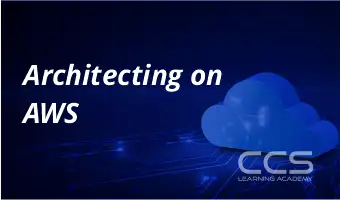Filter by Topic
Filter by Vendor
ISO/IEC 27001 Lead Auditor
Understand ISO 27001 With Our Training Courses ISO 27001 certification …
What you'll learn
Understand the operations of an Information Security Management System based on ISO/IEC 27001
Acknowledge the correlation between ISO/IEC 27001, ISO/IEC 27002 and other standards and regulatory frameworks
Understand an auditor’s role to: plan, lead and follow-up on a management system audit in accordance with ISO 19011
Learn how to lead an audit and audit team
Learn how to interpret the requirements of ISO/IEC 27001 in the context of an ISMS audit
Acquire the competencies of an auditor to: plan an audit, lead an audit, draft reports, and follow-up on an audit in compliance with ISO 19011
Introduction to Programming & Coding | Java Basics for Non-Developers (TTCODE101-J)
This course is a beginner level course for students who …
What you'll learn
Basic concepts of programming
Fundamentals of Java
Setting up and getting familiar with development environment, including IDE’s
Understanding object oriented development
Learning how to make classes, methods and objects
Learning loops, their importance and usage
Use of conditions and regular expressions
Learning importance of lists and arrays
Basic GUI skills
Error and exception handling
Formatting output and formatter class
Agile Coaching Workshop (ICP-ACC)
Course Description New – Learn a practical, real-world framework designed …
What you'll learn
The definition of Agile coaching and the set of competencies and practices associated with being a coach.
How to develop ethical and professional coaching standards and agreements and how to apply them in your coaching engagements with teams and organizations.
The various roles, skillsets and disciplines of an Agile coach – coaching, facilitating, mentoring, teaching and how to develop “your style,” moving in and out of those roles while remaining flexible, open and confident.
The philosophy behind servant leadership and practices and techniques to enable you to become a true servant leader; putting the needs of others first to facilitate the development of high performance teams.
Agile Coach thinking – the mindset shift necessary to help you, and others, focus on team improvement, value-driven delivery, and leveraging constraints while living in the present moment, staying curious, innovative and having fun.
Ways to establish mutual trust allowing you to create a safe, supportive environment in which your team can excel.
Active listening and powerful questioning techniques utilized to leverage your ability to focus on what is being said and maximizing communication and collaboration through seeking and receiving information.
Advanced techniques in planning and goal setting in order to help the team/organization achieve their goals and your agreed-upon coaching results.
Techniques in creating awareness and designing in actions and learning which will assist you in managing progress and accountability within the team.
The use of ASPE’s Agile Coaching Competencies & Practices Framework — a framework for understanding and incorporating Purpose, Proficiency and Practices into your coaching engagements.
Analyze and Visualize Data using Tableau
Course Description: The Analyze and Visualize Data using Tableau Certification …
What you'll learn
Basics about Tableau
How to connect, organize and slice data using Tableau
How to use multiple measures in a view
How learners can successfully show the relationship between various numerical values
How to map and customize data
How to view specific data
How to use quick table calculations to analyze the data in Tableau
How to use basic and advanced calculations in Tableau
How to extract data
What Tableau geocoding is
How to create using parameters
How to make dashboards and stories
Using Tableau to generate statistics
Using Tableau for forecasting
How to compare measures
How to assess the quality of data
How to use Tableau to perform exploratory analysis
Best practices while using Tableau
How to design visualizations for presentations
Architecting on AWS
Course Description In this authorized Amazon Web Services (AWS) course, …
What you'll learn
Making decisions based on the AWS-recommended architectural principles and best practices
Leveraging AWS services to make your infrastructure scalable, reliable, and highly available
Leveraging AWS managed services to enable greater flexibility and resiliency in an infrastructure
Making an AWS-based infrastructure more efficient in order to increase performance and reduce costs
Using the Well-Architected Framework to improve architectures with AWS solutions
To reinforce this material, you will also explore case studies with a variety of AWS infrastructure designs and strategies.
After the course, you will be fully equipped to build and scale a more efficient and reliable IT solution on the AWS cloud environment.
PL-900T00: Microsoft Power Platform Fundamentals
Course Description: Learn the business value and product capabilities of …
What you'll learn
Describe Microsoft Power Platform components
Describe Microsoft Dataverse, Connectors and AI builder
Describe cross-cloud scenarios across M365, Dynamics 365, Microsoft Azure and 3rd party services
Identify benefits and capabilities of Microsoft Power Platform
Identify the basic functionality and business value Microsoft Power Platform components
Implement simple solutions with Power Apps, Power Automate, Power BI, and Power Virtual Agents
Identify when to use each Microsoft Power Platform component application to create business solution
Learn the value of using Microsoft Power Platform to create business solutions
Learn the components and features of Microsoft Power Platform
Descibe the difference between Dataverse and Common Data Model
Explain use cases and limitations of business rules and process flows
Explain what environments, tables, columns, and relationships are in Dataverse
Learn how other organizations digitize their processes using Power Apps
See Power Apps in action and learn options for making your first app
Learn about what Power Apps is and its business value
See how Power Automate works and looks from the user’s perspective
Build a simple flow
Learn the business value and features of Power Automate
See how Power BI works and looks from the user’s perspective
Learn how to build a simple Power BI dashboard
Describe the business value and features of Power BI
Describe the business value and features of Power Virtual Agents
Build a basic chatbot
Learn essential components that make up Power Virtual Agents and chatbots
MS-700T00-A: Managing Microsoft Teams
Course Description: The Managing Microsoft Teams course is designed for …
What you'll learn
Understand the discipline of project management as it applies to using Microsoft Project 2013.
Create a Work Breakdown Structure.
Identify Task Types & Relationships.
Define Resources within Project.
Make Work Package Estimates.
Create an Initial Schedule.
Create a Resource Leveled Schedule.
Create Projects from templates, Excel files.
Create Global templates.
Create formulas and graphical indicators.
The steps to record a macro.
Format Output and Print Reports.
Integrate Multiple Projects.
Set up a Project with a Calendar, Start date, and scheduling method.
Understand Manually Schedule vs. Auto Schedule.
Manage multiple projects.
Be able to create a master project list with shared resources.
Have a fundamental understanding of how Microsoft Project will help them track their projects.
Understand what is new in Project 2013 and how it will increase their productivity.
Learn how the ribbon will help them get the most of out of this productivity tool.
Learn how to quickly change views and see what is going on with their projects.
Understand the 5 essential steps in building a successful project plan.
Prepare a new project plan and set the date and other basic information.
Enter detailed project information.
Understand how to sequence tasks.
Understand and define basic resource types.
Assign resources to tasks.
Understand the benefits of baselining a project or specific tasks.
Understand the basics of how to track project progress.
Create a new project using a template, Excel, a SharePoint Tasks List or a new Project file.
Establish one or more calendars to constrain resource availability.
Configure Microsoft Project to calculate the schedule from the Start Date forward or from the Finish Date backward.
Understand how to turn on Manually Schedule and Auto Schedule.
Understand when to use Manually Schedule.
Understand the limitations of Manually Scheduling.
Build and use summary and subordinate tasks.
Understand and use milestones.
How to organize the WBS.
How to format the WBS.
Develop WBS outlines.
Assign completion criteria.
Evaluate the WBS.
Understand and use WBS outlines.
Understand how to link Project artifacts to their projects.
Understand how to create notes on tasks.
Understand the different types of task relationships.
Understand and use various methods to create relationships.
Determine and display task sequence.
Understand how to use Lag, Lead and Delay.
Define the different types of resources.
Define individual resources that will be used on the project.
Record the cost(s) of using each type of resource.
Record the limit of availability for each type of resource by establishing a resource calendar and defining the maximum units of that resource.
Assign values for resources, duration and work.
Understand task types.
Understand Effort Driven scheduling.
Understand material resources and their costs to a project plan.
Identify the critical path.
Understand difference between slack and slippage.
Calculate float.
How to leverage constraints.
How to get the benefit from the Task Inspector, and the impact of changes on a project schedule.
Adjust a project schedule to account for limited resources.
View the overall cost and schedule of a project.
Identify resources that are over- allocated for a project schedule.
Use multiple ways to adjust tasks and assignments to remove over- allocation for any resource.
Set a baseline.
Enter and manage project performance data.
Pick a tracking method.
Perform variance analysis.
Sync Projects results with SharePoint.
Create standardized views, with the power of sorting, filtering and grouping.
Customize a variety of standard reports.
Learn how to use Visual Reports.
Export reports in a variety of formats.
Use common resources among multiple projects.
Link tasks between multiple projects.
Create a consolidated view of multiple projects and shared resources.
Take advantage of the advance features of Microsoft Project 2013.
Be able to create a Macro.
Share common settings among all future projects.
Oracle 11g: Programming with SQL I and II eLearning
Course Description: Oracle Database 11g delivers economies of scale on …
What you'll learn
Concepts and components of an Oracle Database 11g database, how to retrieve information from it using SQL, and the steps for sorting, limiting, modifying, and formatting this information
Steps for writing queries that convert data from one type to another, specify conditions, perform calculations on groups of rows or even tables, and return values from more than one table
Steps for manipulating queries to return the data you need, using subqueries and set operators, and manipulating the actual data using INSERT, UPDATE, DELETE, and other data manipulation language (DML) statements
Steps for creating, defining, and dropping tables, manipulating how their data can be viewed, and using schema objects to generate integers, improve queries, and rename tables
Steps for controlling user access to objects and for maintaining these objects by dropping columns and adding constraints and indexes
Steps for querying data dictionary views to view schema objects and for performing operations on large amounts of data, such as inserting data into multiple tables and merging table rows
Steps for managing data in different time zones in Oracle Database 11g, for managing time intervals, and for using datetime functions
Steps for retrieving data using subqueries and using regular expressions to search for, match, and replace strings










